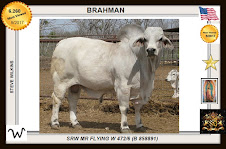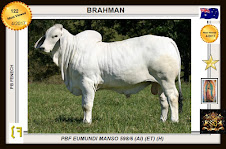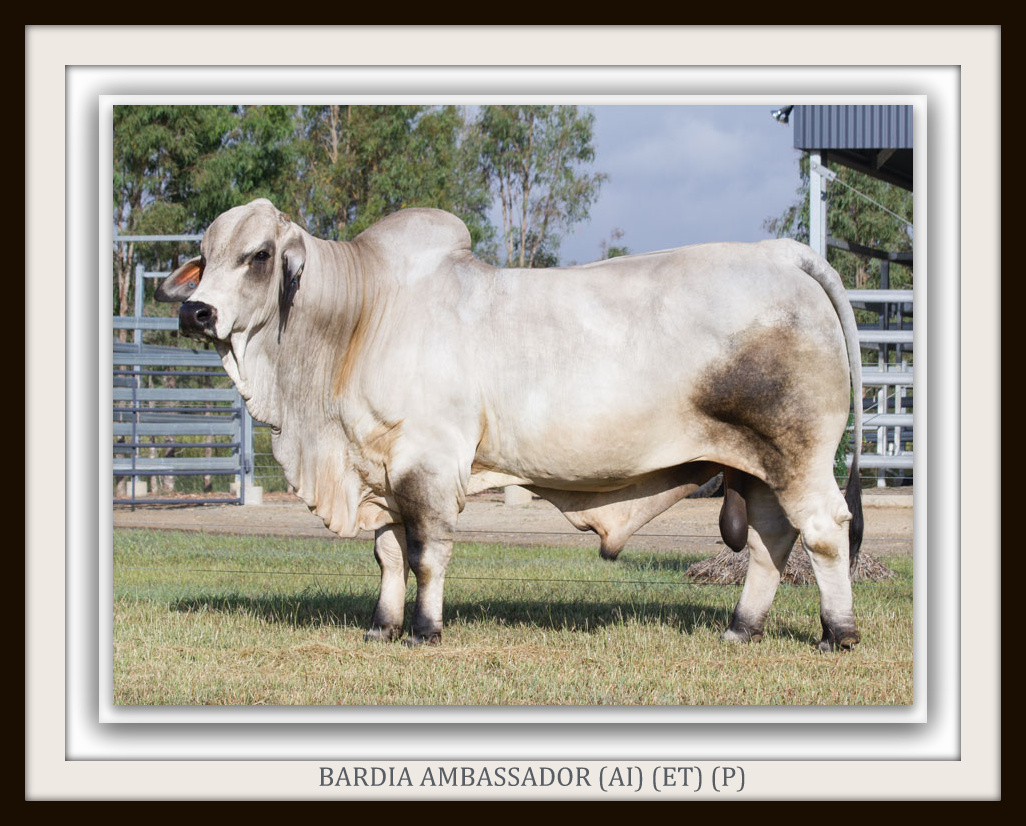Ganado Boran fueron domesticados en 3 partes del mundo:
● Bos Indicus (Cebú) domesticada en el valle del Indo (Pakistán) 4000BC
● Bos Taurus europeo domesticado en el este de Europa 6000 aC
● Bos Taurus africano domesticada en el este de África al sur del Sahara área de 8000 aC
El ganado se introdujeron en África:
Europea Bos Taurus La primera presentación fue joroba camitas Longhorns menos taurina (Bos Taurus) y llegaron en el delta del Nilo, alrededor del año 6000 antes de Cristo. La segunda introducción, la de los Shorthorn taurina (B. Taurus) supuestamente ocurrió alrededor de 2750-2500 aC.
La primera introducción de las jorobas ganado cebú Bosindicus estaba ya en 2000-1788 antes de Cristo. La segunda introducción, asociado con la invasión árabe de África, tuvo lugar desde aproximadamente 699 dC.
Bos africano domesticado en África Tauro.
Composición genética de la Boran
A través de muestreo de ADN Hanotte et al han analizado la estructura genética de la Boran y consiste en las proporciones genéticas siguientes:
● Europea Bos Taurus - 24%
● Bos Indicus - 64%
● África Bos Taurus - 12%
El Boran desarrollado en el este de África y el principal punto de acceso Boran fue la meseta Borana en el sur de Etiopía. Ese fue un punto en el que todas las razas emigraron a través de sus diversos destinos en África. El Boran se convirtió en la raza de dominar África oriental y especialmente en Kenia, donde la Sociedad de Criadores de Ganado de Kenya Boran '(BCBS) se han reproducido la "Boran mejorado" desde el cambio de siglo. "Si bien los criadores Boran han mejorado mucho la conformación de carne de sus animales, nunca perdieron de vista las cualidades importantes de la Boran indígena", para citar el Comité de Basilea. Por lo que se puede determinar esta es la única raza en África (y por lo tanto el mundo) para tener esta combinación específica de genes. Debe entenderse bien que el Boran es una raza que tuvo su última infusión de "nuevos" genes en 700 AD. El Boran tanto, no es una raza sintética o compuesto que se han cruzado en las últimas décadas. Se ha criado como una raza pura para 1300 años. La importancia de este para el criador comercial es que la Boran tendrá vigor híbrido mucho más fuerte que las razas compuesto moderno.
Texto actuales publicados afirma que los orígenes de todos los animales domésticos se remontan a dos centros principales de Asia (Bos indicus) y el Cercano Oriente-Europeo (Bos taurus). Debido a la tecnología reciente mejora en los métodos de identificación genética y nuevos hallazgos arqueológicos, ahora se cree que es un origen tercero, que era un taurina nativa africana, centrado en el África subsahariana Cinturón de (Bos taurus),.
"Los estudios de genética de la International Livestock Research Institute (ILRI) han demostrado que la composición genética de la keniana Boran es único. Si el fondo genético de la keniana Boran es predominantemente cebú, la raza también contiene taurina fondo de dos orígenes distintos. Un europeo -Próximo Oriente fondo taurina de cierta antigüedad y muy probablemente también de mestizaje reciente y un fondo africano taurina indígena que no se encuentra en ningún asiático cruza cebú como Sahiwal o Brahman "(O.Hanotte. Véase también M.Okomo et al. 1998 , JEO Rege et al. 2001).
Según lo revelado por O.Hanotte en ILRI, que han demostrado que el genoma contiene tres Boran influencias genéticas distintas. Aparte de la influencia de Cebú (Bos indicus), hay influencias de Oriente Próximo-europea Bos Taurus, así como una influencia distinta de Tarus Bos nativo africano. La influencia predominante fue sin embargo desde el Cebú.
"Los Cebú de la segunda ola tienen jorobas torácicos y comenzó a entrar en el noreste de África en el siglo cuarto, pero las importaciones de los principales fecha sólo desde la época de las invasiones árabes que comenzaron en el año 669 dC". "El Cebú llegaban a ser comunes en Kenia en el siglo 15." Ian Mason, (Factores que influyen en la distribución mundial de ganado vacuno. FAO1974).
A partir de este "paquete genético", llegó el ganado Borana en Etiopía, que se convirtió en el tipo de la raza dominante de la región conocida como el East African Shorthorned Cebú. Por lo general son el ganado que lleva el Borana en el sur de Etiopía y las tribus somalíes y Orma de Kenia. A partir de estos tipos de vino el Boran adoptadas por los ganaderos comerciales en Kenya que desarrollaron la raza que conocemos hoy.
El Boran ahora se encuentran en Zambia, Tanzania, Uganda, Australia y los EE.UU. se originó a partir de las exportaciones genéticas de ganado Boran de Kenia entre los años 1970 y 1990. La raza en Zimbabwe y Sudáfrica provino de embriones exportados de la excelente instalación en Ol Pejeta Ranch en Nanyuki, Kenia, durante 1994 y 2000.
La década de 1960 vio el primer intento de Boran a Sudáfrica. Un agricultor de Kenia, Miles Fletcher, crió ganado Boran y ovejas en una parte del rancho Sugoroi cerca Naromoru, Kenia. En 1962 decidió emigrar a Sudáfrica con la intención de establecer un rebaño Boran en Sudáfrica. Se transporta a más de 100 rebaños a Zambia, donde recibió noticias de los Servicios Veterinarios de Rhodesia que sólo se les permitiría mover la progenie de Boran compró por debajo de Kenya, a través de Rhodesia del Sur a África. En 1963 abandonó su intento de Miles y vendió su Boran a Agricultural Enterprises Ltd, una filial de Zambezi Ganadería Corp Ltd., situada en el distrito de Choma, Zambia. Su folleto dice "Hoy los Borans demostración son inigualables en Zambia .... el núcleo de la manada de haber sido adquirido por el Sr. Miles Fletcher, que es uno de los criadores más importantes de Kenia.
Al leer un artículo sobre la transferencia de embriones y el papel revolucionario que ello podría tener en la transferencia de la genética de la enfermedad de las áreas sensibles, gran Mile sobrino Simon Hodgson, se dio cuenta de que la importación de Boran se había convertido en una posibilidad. En 1991 Simon Hodgson en contacto con el Kenya Boran Sociedad de Criadores de Ganado (KBCBS) que expresan interés en importar Boran en Sudáfrica. En diciembre de 1991 el presidente del Comité de Basilea, Giles Prettejohn invitó a Simón a encontrar un candidato idóneo desde Sudáfrica a juzgar a los Boran en el Salón de 1992 Nairobi - el primer paso en el aumento de la conciencia de Boran en Sudáfrica. Douglas Ralfe aceptó la invitación y junto con su hijo, Tim, voló a Kenia y el juzgado Boran en el show de Nairobi.
A continuación, pasó diez días como invitados de los KBCBS visitar los ranchos prominentes Boran de Kenia. Douglas estaba impresionado con la Boran - "Eran de un tipo bueno y se adapta muy al medio ambiente que estaban siendo cultivadas in Cuando visitamos el rancho Mutare vimos una manada de unas doscientas vacas rojas y terneros, y aproximadamente a 50 metros lejos el mismo número de vacas y terneros blancos. Lo que fascinó a nosotros era el instinto de rebaño gran mostrado por el ganado, ya que no trató de mezclarse a pesar de que sólo había dos pastores. Es sin duda la mejor vista del ganado que he tenido el privilegio de ver. Teniendo en cuenta las demás características maravillosas que tiene el Boran, se decidió allí mismo que importar el Boran en Sudáfrica ".
En agosto de 1995 el Departamento de Mejora Animal reconoció la Boran como una raza. El 17 de mayo de 2003, la Sociedad de Criadores de Ganado Boran de SA fue fundada.
________________________________________
Boran cattle were domesticated in 3 parts of the world:
● Bos Indicus (Zebu) domesticated in the Indus Valley (Pakistan) 4000BC
● European Bos Taurus domesticated in Eastern Europe 6000 BC
● African Bos Taurus domesticated in East Africa south of the Sahara area of 8000 BC
Cattle were introduced in Africa:
European Bos Taurus The first presentation was hump Hamitic Longhorns less taurine (Bos taurus) and arrived in the Nile Delta, circa 6000 BC. The second introduction, the taurine Shorthorn (B. taurus) supposedly occurred around 2750 to 2500 BC.
The first introduction of humped zebu cattle Bosindicus was in 2000-1788 BC. The second introduction, associated with the Arab invasion of Africa, took place from about 699 AD.
African Bos Taurus domesticated in Africa.
Genetic composition of the Boran
Through DNA sampling Hanotte et al have analyzed the genetic structure of the Boran and genetic consists of the following proportions:
● European Bos Taurus - 24%
● Bos Indicus - 64%
● African Bos Taurus - 12%
The Boran developed in eastern Africa and the main access point Boran was the Borana Plateau in southern Ethiopia. That was a point where all races migrated through their various destinations in Africa. The Boran breed became dominate East Africa and especially in Kenya, where Cattle Breeders Society of Kenya Boran '(BCBS) have bred the "improved Boran" since the turn of the century. "While Boran breeders have greatly improved the conformation of meat animals, never lost sight of the important qualities of the indigenous Boran" to quote the Basel Committee. As can determine this is the only breed in Africa (and therefore the world) to be the specific combination of genes. It should be understood well that the Boran is a race that had its last infusion of "new" genes in 700 AD. The Boran is therefore not a synthetic or composite race who have crossed in the past decades. It has been raised as a pure race for 1300 years. The importance of this for the commercial breeder is that the Boran have much stronger hybrid vigor than modern breeds compound.
Text published today says that the origins of all pets two main centers of Asia (Bos indicus) and the Near East-European (Bos taurus) back. Due to recent technology improved genetic identification methods and new archaeological discoveries, now believed to be a third source, who was a native African taurine, focusing on sub-Saharan Africa Belt (Bos taurus).
"Genetic studies of the International Livestock Research Institute (ILRI) have shown that the genetic composition of the Kenyan Boran is unique. If the genetic background is predominantly Kenyan Boran zebu breed also contains taurine background of two different origins. A European-East taurine background of a certain age and most likely East recently mixing and indigenous African taurine background not found in any Asian zebu and Sahiwal or Brahman "(O.Hanotte. M.Okomo See also et al. 1998 JEO Rege et al. 2001).
As revealed by O.Hanotte at ILRI, which have shown that the genome contains three distinct genetic influences Boran. Apart from the influence of Zebu (Bos indicus), there are influences from the Middle East-European Bos Taurus and a distinct influence of Bos Tarus African native. The predominant influence was however from Cebu.
"The second wave of Zebu have humps chest and began to enter north Africa in the fourth century, but imports of key date only from the time of the Arab invasions that began in 669 AD." "The Cebu were becoming common in Kenya in the 15th century." Ian Mason, (Factors influencing the global distribution of cattle. FAO1974).
From this "genetic package" arrived Borana cattle in Ethiopia, which became the type of the dominant race in the region known as the East African Shorthorned Cebu. Usually cattle are carrying the Borana in southern Ethiopia and the Somali and Kenyan Orma tribes. From these types of wine the Boran adopted by commercial farmers in Kenya who developed the breed we know today.
The Boran are now in Zambia, Tanzania, Uganda, Australia and the U.S. originated from genetic Boran cattle exports to Kenya between 1970 and 1990. race in Zimbabwe and South Africa came from embryos exported from the excellent facility at Ol Pejeta Ranch in Nanyuki, Kenya, during 1994 and 2000.
The 1960s saw the first attempt to Boran to South Africa. A farmer in Kenya, Miles Fletcher, Boran cattle and sheep raised in a part of the ranch near Sugoroi Naromoru, Kenya. In 1962 he decided to emigrate to South Africa with the intention of establishing a Boran herd in South Africa. It carries more than 100 herds to Zambia, where he received news of the Veterinary Services of Rhodesia that they would only be allowed to move the progeny of Boran bought below Kenya, Rhodesia via South Africa. In 1963 Miles abandoned his attempt and sold his Boran to Agricultural Enterprises Ltd, a subsidiary of Zambezi Gas Corp Ltd., located in the district of Choma, Zambia. Your brochure says "Today's demonstration Borans are unparalleled in Zambia .... the core of the herd being acquired by Mr. Miles Fletcher, one of the most important breeders in Kenya.
When reading an article on embryo transfer and the revolutionary role it would play in the transfer of genetic disease sensitivity, large areas Mile nephew Simon Hodgson, he realized that the import of Boran had become a possibility. In 1991 Simon Hodgson contacted the Kenya Boran Cattle Breeders Society (KBCBS) expressing interest in importing Boran in South Africa. In December 1991, the Basel Committee chairman, Giles Prettejohn invited Simon to find a suitable candidate from South Africa to judge the Boran in Room 1992 Nairobi - the first step in raising awareness Boran in South Africa. Ralfe Douglas accepted the invitation and along with his son, Tim, flew to Kenya Boran and the court in Nairobi show.
He then spent ten days visiting guests of KBCBS prominent Kenyan Boran ranches. Douglas was impressed with the Boran - "They were a good guy and the same number is very adaptable to the environment they were being cultivated in When we visited the ranch Mutare saw a herd of about two hundred red cows and calves, and approximately 50 meters away cows and white calves. What fascinated us was the instinct of large herd shown by cattle, and did not try to mix even though there were only two pastors. It is undoubtedly the best view of cattle that have had the privilege to see. Considering other wonderful features that the Boran, it was decided there that matter Boran in South Africa. "
In August 1995 the Department of Animal Breeding Boran recognized as a breed. The May 17, 2003, the Company Boran Cattle Breeders of SA was founded.
Genealogy, Classification and Ranking of Zebu or Cebu in the World. Comment by Eng. Carlos Juan Felipe Urdaneta Alamo. MD.IG.
CJU Cebú informa:
Suscribirse a:
Enviar comentarios (Atom)
Datos personales
Archivo del blog
-
►
2022
(149)
- ► septiembre (8)
-
►
2021
(87)
- ► septiembre (4)
-
►
2020
(206)
- ► septiembre (1)
-
►
2019
(485)
- ► septiembre (19)
-
►
2018
(947)
- ► septiembre (121)
-
►
2017
(1014)
- ► septiembre (71)
-
►
2016
(1486)
- ► septiembre (145)
-
►
2015
(727)
- ► septiembre (37)
-
▼
2014
(677)
- ► septiembre (72)
-
▼
junio
(54)
- BAÇÃO S ★★★★★ |•••►RAZA: #GUZERÁ #BRAZIL
- JDH MR BURGER MANSO (B 830128) ★★★★★ |•••►RAZA: #...
- VL ROJO DESIGNER 2/75 (B 911895) ★★★★★ |•••►RAZA: ...
- DRUSO DA CA ★★★★★ |•••►RAZA: #NELORE #BRAZIL
- IW'S REXCRATA 226 (B 200245) ★★★★★ |•••►RAZA: #BR...
- LOS EJIDOS PARAMERO 069/5 ★★★★★ |•••►RAZA: #BRAHM...
- AGUAS PRIETAS MASSI 019/39 ★★★★★ |•••►RAZA: #GYR ...
- E.O.Z MR LAWFORD 492/11 T.E T.E. ★★★★★ |•••►RAZA: ...
- EL CUCHARO KMS 647/26 ★★★★★ |•••►RAZA: #BRAHMAN ...
- AT RISO BO RELOTO 730 (B 679283) ★★★★★ |•••►RAZA: ...
- CABUL III S (B 891729) ★★★★★ |•••►RAZA: #GUZERÁ ...
- HOMENAGEM AM (G 9593) ★★★★★ |•••►RAZA: #GUZERÁ #...
- EL PASO DIDOR FERNO 71/1 ★★★★★ |•••►RAZA: #BRAHMA...
- MARXVILLE 11 60 ★★★★★ |•••►RAZA: #BRAHMAN #SUDAF...
- MISS V8 866/7 (C 917539) ★★★★★ |•••►RAZA: #BRAHMA...
- ACASO S ★★★★★ |•••►RAZA: #GUZERÁ #BRAZIL
- EL CUCHARO 999 CAPONERA T.E. ★★★★★ |•••►RAZA: #BR...
- KHAN MHB 04-27 ★★★★★ |•••►RAZA: #BORAN #SUDAFRICA
- NDA 9 ★★★★★ |•••►RAZA: #BORAN #KENIA
- STRIKER MHB 05-02 ★★★★★ |•••►RAZA: #BORAN #KENIA
- La Raza Boran ★★★★★ |•••►RAZA: #Boran
- MOGWOONI K6K 3192 ★★★★★ |•••►RAZA: #BORAN #KENIA
- GOLIAT MHB 06-47 ★★★★★ |•••►RAZA: #BORAN #KENIA
- RUSTIN MHB 06-30 ★★★★★ |•••►RAZA: #BORAN #KENIA
- FALCON FIV DE BRASÍLIA ★★★★★ |•••►RAZA: #GYR #BR...
- BARZEE'S GENERAL 850/3 (B 895389) ★★★★★ |•••►RAZA:...
- MR. V8 565/2 (B 303565) ★★★★★ |•••►RAZA: #BRAHMAN...
- NEDIBEST 03 495 ★★★★★ |•••►RAZA: #BRAHMAN #SUDAF...
- JAMANLE JZH 5 ★★★★★ |•••►RAZA: #BRAHMAN #SUDAFRICA
- ROUGE 885/8 ★★★★★ |•••►RAZA: #BRAHMAN #BRAZIL
- LUSITANIA MILLONARIO TANQUE T.E. 2649/07 ★★★★★ ...
- TCHECO FIV JMMA ★★★★★ |•••►RAZA: #GYR #BRAZIL
- LEONOR 1249 SOY BUENO MANSO ★★★★★ |•••►RAZA: #BRA...
- LEONOR 1391 HOUSTON SUPLIDOR ★★★★★ |•••►RAZA: #BR...
- LEONOR 1211 SUPLIDOR MANSO ★★★★★ |•••►RAZA: #BRAH...
- SR AZAR GRAND MANSO 806 (B 804237) ★★★★★ |•••►RAZA...
- MR. V8 466/7 (B 918937) ★★★★★ |•••►RAZA: #BRAHMAN...
- MS BAR W AK 47 (C 880117) ★★★★★ |•••►RAZA: #BRAHM...
- BRASÃO AJCF 99 ★★★★★ |•••►RAZA: #SINDHI #BRAZIL ♂
- VL ROJO GRANDE 15/2 (B 824593) ★★★★★ |•••►RAZA: #...
- CHEROKEE ARAUTO 1/413 (B 189310) ★★★★★ |•••►RAZA: ...
- MR. V8 300/7 (B 908651) ★★★★★ |•••►RAZA: #BRAHMAN...
- MR. BR 77 ONASSIS 97 ★★★★★ |•••►RAZA: #BRAHMAN #...
- KANDAHAR DA IPB ★★★★★ |•••►RAZA: #NELORE #BRAZIL
- 1646 DA MN ★★★★★ |•••►RAZA: #NELORE #BRAZIL
- KATMANDU AJ ★★★★★ |•••►RAZA: #NELORE #BRAZIL
- VL ELENA 2/21 (C 911243) ★★★★★ |•••►RAZA: #BRAHMA...
- SACAPALOS X-RAY TITI 313 T.E. ★★★★★ |•••►RAZA: #B...
- KAYAK TE MAFRA ★★★★★ |•••►RAZA: #NELORE #BRAZIL
- SE KARU "TODO TERRENO" 505/6 ★★★★★ |•••►RAZA: #BR...
- CA DONALD ★★★★★ |•••►RAZA: #GYR #BRAZIL
- MR UBER ATNA POI 353 ★★★★★ |•••►RAZA: #BRAHMAN #...
- THOR OB ★★★★★ |•••►RAZA: #NELORE #BRAZIL
- MISS V8 835/7 ★★★★★ |•••►RAZA: #BRAHMAN #USA






























No hay comentarios:
Publicar un comentario